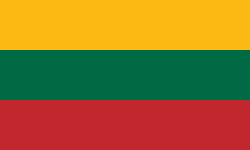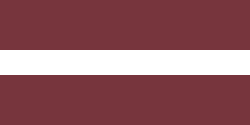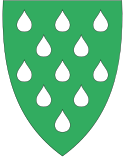Birštonas
| Birštonas | |
|---|---|
 Kostel Sv. Antonína Padovského | |
| Poloha | |
| Souřadnice | 54°36′10″ s. š., 24°1′40″ v. d. |
| Nadmořská výška | 79 m n. m. |
| Stát | |
| Kraj | Kaunaský |
| Okres | Birštonas |
 | |
| Rozloha a obyvatelstvo | |
| Rozloha | 13 km² |
| Počet obyvatel | 3 136 (2010) |
| Hustota zalidnění | 241,2 obyv./km² |
| Správa | |
| Starostka | Nijolė Dirginčienė (Ubartaitė, * 1957) |
| Vznik | 1382 |
| Oficiální web | www |
| PSČ | LT-59206 (Okresní úřad), LT-59009 (pošta) |
| Některá data mohou pocházet z datové položky. | |
Birštonas (česky zastarale Birštany[1]) je (v pořadí podle velikosti 10. ze 13 v kraji) okresní město na jihu Kaunaského kraje na jihu Litvy a také lázeňské město s balneologickou léčbou a léčbou bahnem. Zde jsou prameny léčivých minerálních vod jako například „Vytautas“, „Versmė“, „Danutė“, „Vaidilutė“ a další. Leží 39 km na jih od krajského města Kaunas, 101 km na západ od Vilniusu. Je ze tří stran kromě jihovýchodní obklopeno meandrem Němenu, jehož klička sahá severozápadním směrem až k sousednímu okresnímu městu Prienai (7 km). V lázeňském městě je zděný kostel Sv. Antonína Padovského (postaven roku 1909, v tom místě byl kostel již před rokem 1529), dále pošta (PSČ:LT-59009), kulturní středisko (v něm je největší vitráž v Litvě „Lietuva“: plocha je 142 m², autor Vytautas Švarlys), poliklinika, ambulance, střední škola, škola uměmí, birštonské muzeum (založeno roku 1967), sakrální muzeum (r. 2000), rezidence starších (od r. 2007), památník Vytautase (od r. 1998, od sochaře Gediminase Jokūbonise), socha Martyna Mažvyda, socha „Dívka s píšťalou“, památník Jonu Basanavičiusovi na náměstí Jona Basanavičiuse, památník partyzánům. Je zde 85 m kopec a hradiště Birštono piliakalnis neboli Vytauto kalnas (Vytautasův kopec), které je 350 m na jih od kostela Sv. Antonína Padovského ve Vytautasově parku (zde se na jaře konají jazzové festivaly), dále kopec Dainų kalnelis (kopeček písní), dva lázeňské domy, hřebčinec, olympijské středisko kanoistiky.
Sport
- FK Prienai fotbalový klub;
- BC Vytautas basketbalový klub;
Partnerská města
| Město | Znak | Stát |
|---|---|---|
| Bykle | ||
| Keila | ||
| La Croix-en-Touraine | ||
| Leck | ||
| Neringa | ||
| Sigulda | ||
| Sysmä | ||
| Żnin |
Odkazy
Reference
V tomto článku byl použit překlad textu z článku Birštonas na litevské Wikipedii.
Externí odkazy
 Obrázky, zvuky či videa k tématu Birštonas na Wikimedia Commons
Obrázky, zvuky či videa k tématu Birštonas na Wikimedia Commons
Média použitá na této stránce
Finská vlajka
Coat of arms of Neringa
Coat of arms of Biržtonas
Coat of arms of Keila, Estonia
Coat of arms of the municipality Leck in Schleswig-Holstein, Germany.
Coat of arms of the city of Sigulda, Latvia.
Granted 30 September 1938. The author of the coat of arms is unknown, but it is believed that this is Rihards Zariņš's student, talented graphic artist Karlis Krauze.
Autor: Scotch Mist, Licence: CC BY-SA 4.0
Lithuania, officially the Republic of Lithuania, is a country in the Baltic region of Europe and is considered to be one of the Baltic states. It is situated along the southeastern shore of the Baltic Sea, to the east of Sweden and Denmark. It is bordered by Latvia to the north, Belarus to the east and south, Poland to the south, and Kaliningrad Region (a Russian enclave) to the southwest. Lithuania has an estimated population of 2.8 million people (as of 2019), and its capital and largest city is Vilnius. Other major cities are Kaunas and Klaipėda. Lithuanians are Baltic people.
For centuries, the southeastern shores of the Baltic Sea were inhabited by various Baltic tribes. In the 1230s, the Lithuanian lands were united by Mindaugas, the King of Lithuania, and the first unified Lithuanian state, the Kingdom of Lithuania, was created on 6 July 1253. During the 14th century, the Grand Duchy of Lithuania was the largest country in Europe; present-day Lithuania, Belarus, Ukraine, and parts of Poland and Russia were the territories of the Grand Duchy. With the Lublin Union of 1569, Lithuania and Poland formed a voluntary two-state ’personal union’, the Polish–Lithuanian Commonwealth. The Commonwealth lasted more than two centuries, until neighbouring countries systematically dismantled it from 1772 to 1795, with the Russian Empire annexing most of Lithuania's territory. As World War I (WWI) neared its end, Lithuania's Act of Independence was signed on 16 February 1918, declaring the founding of the modern Republic of Lithuania. In the midst of the Second World War (WWII), Lithuania was first occupied by the Soviet Union and then by Nazi Germany. As World War II neared its end and the Germans retreated, the Soviet Union reoccupied Lithuania. On 11 March 1990, a year before the formal Dissolution of the Soviet Union, Lithuania became the first Baltic state to declare itself independent, resulting in the restoration of an independent State of Lithuania.
The Scotch Mist Gallery contains many photographs of historic buildings, monuments and memorials of Poland and countries that previously comprised the Polish-Lithuanian Commonwealth.
Kommunevåpen for Bykle kommune i Aust-Agder fylke.
Flag of Kauno County, Lithuania




















